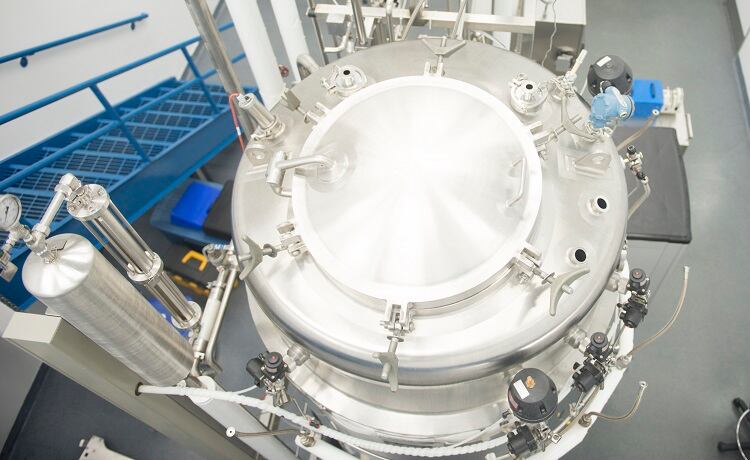Chicken egg white protein is a widely used ingredient in the food industry. The yearly consumption of egg proteins in 2020 was around 1.6m tonnes, with market growth expected in the coming years.
However, increased demand for eggs presents both ethical and environmental challenges. Intensive chicken farming raises animal welfare concerns, and associated environmental impacts include land use, climate change, water scarcity and resource depletion.
As a result, alternative methods of production are attracting increased attention. Precision fermentation is a big one. The technology enables the programming of micro-organisms to produce complex organic molecules, such as proteins.
Yet the environmental impacts of industrial-scale production of egg white protein produced using precision fermentation techniques have not been explored. Until now.
Cell-cultured ovalbumin at scale
Fresh research from the Future Sustainable Food Systems research group at the University of Helsinki, together with VTT Technical Research Centre of Finland, is targeting the most abundant protein in egg whites: ovalbumin (OVA). Indeed, OVA accounts for more than 50% of egg white proteins.
Advances in cellular agriculture have made it possible to produce recombinant or cell-cultured OVA on a large enough scale to consider it an economically feasible alternative to chicken-based egg white powder.
As it stands, cell-cultured OVA is being produced in a bioreactor at a pilot scale using the filamentous ascomycete fungus Trichoderma reesei. The gene carrying the blueprints for ovalbumin is inserted by modern biotechnological tools into the fungus which then produces and secretes the same protein that chickens produce, explained Dr Emilia Nordlund from VTT Technical Research Centre of Finland.
The ovalbumin protein is then separated from the cells, concentrated and dried to create a final functional product, she continued. The result? A protein powder with similar functionality to chicken egg white protein powder in food formulation.
Sustainability profile of T.reesei-produced OVA
In a study published in Nature Food, the researchers conducted a life cycle assessment (LCA) of T. reesei-produced OVA throughout all production steps to compare it with the equivalent functional unit of dried chicken egg white protein produced in Finland, Germany and Poland.
Cell-cultured products generally require more electricity than typical agricultural products, as bioreactors must be heated during production. As a result, the type of energy source used affects the level of environmental impact.
On the other hand, the amount of agricultural inputs needed for ovalbumin production by microbes, such as glucose, is generally substantially lower per kilogram of protein powder.

Findings suggested that the fungus-produced ovalbumin reduced land use requirements by almost 90% and greenhouse gases by 31-55% compared to the production of its chicken-based counterpart.
“In the future, when production is based on low carbon energy, precision fermentation has the potential to reduce the impact even by up to 72%,” said Doctoral Researcher Natasha Järviö from the University of Helsinki.
Dr Nordlund said the research group was expecting these kind of results. “We have done preliminary calculations, which were very promising, but this detailed analysis proved that the positive environmental impacts are huge,” she told FoodNavigator.
“It’s especially interesting that when we move to green energy and more sustainable sugar sources as feedstocks (e.g. via side-stream utilisation) the GHG emissions can be reduced a lot more (clearly above 70%).”
Results concerning impact on water use on the environment were less conclusive, indicating a high degree of dependency on the assumed location of the ovalbumin production site.
Commercialisation potential
A growing number of start-ups are convinced by the commercialisation potential of precision fermentation. The EVERY Company (formerly Clara Foods) in the US, for example, is leveraging biotechnology to create animal-free egg white.
Others, such as Israel-based Remilk, German start-up Formo, and UK located Better Dairy, are creating dairy proteins via similar techniques.
“The process is pretty similar with all microbial strains producing secreted proteins,” Dr Nordlund explained.
“Of course, different microbial/fungal strains are different with their own characteristics, and they need to be tailored and optimised individually to maximise the production levels.”

One of the key challenges facing entrepreneurs in the space is regulation. However, the researchers hope their findings will help advance approval processes.
“I really hope these results encourage policy and other decision makers to give more support to the alternative, in this case biotechnology-based food production methods,” Dr Nordlund told this publication.
“There is of course work still to be done to scale these technologies up, but also these stakeholders can make the effort to facilitate the development by, for example, positive funding (R&D, investment) decisions, and to try to help also with regulatory issues (to make the process as smooth as possible).”
Dr Nordlund continued: “Precision fermentation is really booming and during this year we will for sure see news about different fungal, but also microbial strains that produce different food ingredients, including proteins and lipids.
“It’s really now happening: disruption in food production. I can’t wait to see the new products on the market.”
Source: Nature Food
’Ovalbumin production using Trichoderma reesei culture and low-carbon energy could mitigate the environmental impacts of chicken-egg-derived ovalbumin’
Published online 16 December 2021
DOI: https://doi.org/10.1038/s43016-021-00418-2
Authors: Järviö, N. Parviainen, T., Maljanen, NL. et al.




